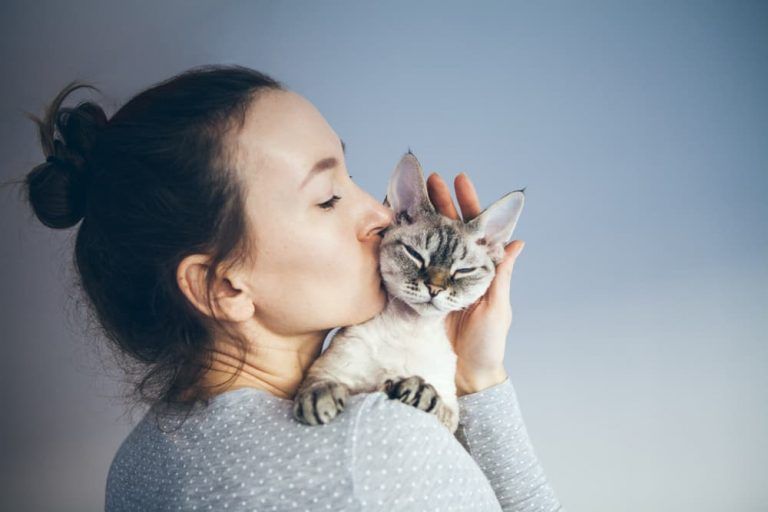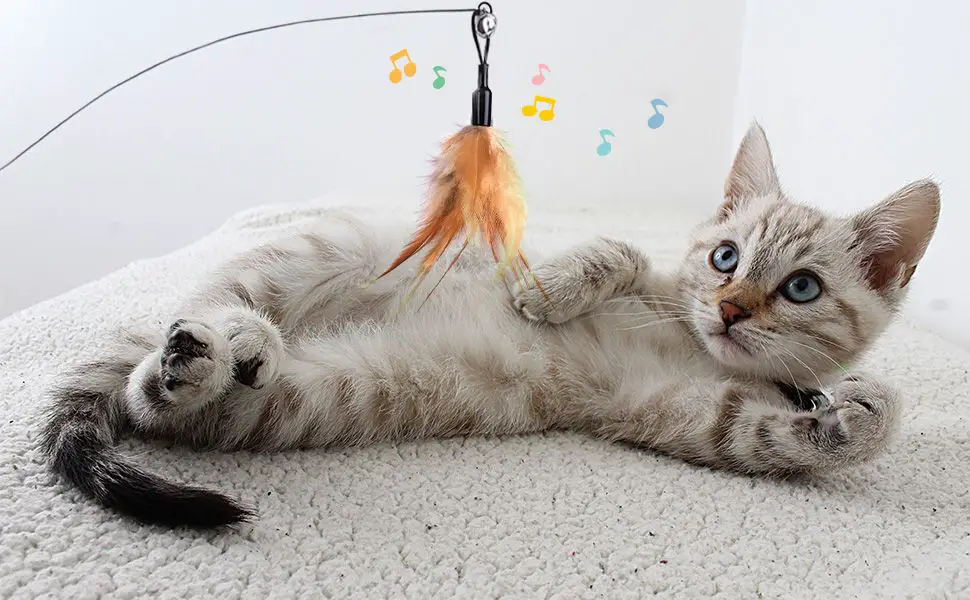Cats are often seen as independent and aloof creatures. While they do require less affection and attention than dogs, cats are still social animals that bond with their human companions. Many cat owners like to show affection for their feline friends by kissing them. But do cats actually enjoy kisses, or do they merely tolerate such displays of human affection?
In this article, we’ll explore how cats perceive kisses, whether kissing cats is safe for both parties, and alternative ways to show cats affection that align better with their needs and preferences. The goal is to provide cat owners with a deeper understanding of cat psychology and body language, so they can build even stronger bonds with their feline companions.
Cats’ Senses
Cats rely heavily on their senses to interpret their environment. Their whiskers, in particular, are finely tuned sensory equipment that aid in navigation. Whiskers help cats measure distances and detect vibrations in the air when chasing prey or approaching objects in their surroundings. Cats’ whiskers are linked to nerves that respond to touch, acting like radar to avoid bumping into things or gauge whether they can fit into a tight space.

Cats also have an extremely advanced sense of smell, much more so than humans. They have around 200 million scent receptors compared to only 5 million in people. According to Purina, cats can smell pheromones, which allows them to receive chemical signals from other cats and species. Their powerful sniffers can also detect subtle changes in human behavior through smell.
Cats’ Reactions
When kissed, many cats will quickly turn or pull their head away, shake their head, or even walk away from the unwanted kiss. Cats often have an instinct to pull back when something unknown touches their face (Source). This reaction does not necessarily mean the cat dislikes the owner, but more that the cat is startled or uncomfortable with having their face touched. Cats have sensitive whiskers, and some may shake their heads to adjust their whiskers if they were displaced by a kiss (Source). A cat may also gently put a paw up or push away to create distance and communicate “stop.” These reactions show the cat setting a boundary for unwanted contact.
Interpreting Cat Behavior
Cats have a very expressive body language that allows them to communicate their emotions and intentions clearly. The most obvious way cats communicate is through vocalizations like meowing, purring, hissing or growling. Cats’ ears and tail are also important means of feline communication. According to Hill’s Pet, when a cat holds its tail high and upright, it signals happiness and a friendly mood. A tail that’s down or moves slowly can mean a cat is anxious or upset. A cat’s ears also provide insight into how they are feeling – ears pointed backwards can indicate aggression, while ears pointed forward signal curiosity or attentiveness.
Cats communicate through subtler body language as well. According to experts, a cat walking away with its tail up reveals a confident and content cat. A cat with an arched back, puffed out fur or a swishing tail is feeling threatened or defensive. Understanding these cat communication signals allows owners to better interpret their pet’s needs and emotions.
Evidence of Emotion?
Research on whether cats experience complex emotions like humans is inconclusive. Some studies suggest cats may feel primary emotions like happiness, fear, anxiety or contentment. However, there is debate around whether cats have higher emotions like love, guilt or jealousy.
According to PetFinder, cats likely do not experience complex emotions like guilt, pride or shame [1]. Their emotions are driven by basic needs and stimuli rather than abstract concepts. So while a cat may appear ‘guilty’ after being scolded, they are likely just responding to the owner’s tone of voice and body language.

However, other experts believe there is evidence that cats feel emotions like love. Studies show cats develop social bonds and attachment behaviors with owners that suggest an emotional connection [2]. More research is still needed to fully understand the emotional capabilities of cats.
Bonding and Affection
Cats do form bonds with their human caretakers, even though it may not always be obvious. According to The Cat-Human Bond, cats show affection in subtle ways like rubbing against you, kneading you with their paws, and slowly blinking at you. While they are not as openly demonstrative as dogs, research shows cats become attached to their owners and do see humans as a source of comfort and security.
It often takes time and patience for a cat to form a close bond. But once established, the cat-human connection can be very strong. As explained in Do Cats Get Attached to Their Owners?, cats display affection by wanting to be near their favorite humans. They may follow you from room to room or wait by the door when you’re gone. Physical touch like petting produces oxytocin in cats, the “love hormone” that reinforces positive bonds.
So when you kiss your cat, she may not comprehend the meaning of a kiss, but will understand the affection behind it through your touch, gentle tone, and facial expressions. Establishing a bond with your cat allows her to feel safe and cared for. In return, she will show you love in her own subtle, kitty ways.
Kissing Risks
While kissing your cat may seem like a natural display of affection, there are some potential risks to be aware of.
One of the biggest concerns is the spread of illness and disease. Cats can carry germs and bacteria in their mouths that can be harmful to humans, such as Pasteurella and Capnocytophaga (1). These bacteria are more likely to be transmitted through a bite, but contact with a cat’s saliva carries some risk. Kittens and cats with compromised immune systems tend to harbor more of these bacteria.

Upper respiratory infections are also common in cats, and human colds and flu can be passed back and forth between cats and humans. Kissing directly on your cat’s nose or mouth increases the likelihood of transmitting illnesses. Even affectionate nibbles from your cat could lead to infection.
Allergies are another consideration, especially for people who may be allergic to cats. Saliva contains allergens that could trigger reactions in sensitive individuals. Asthma and skin reactions are possible even from brief kisses.
While rare, some more serious diseases like ringworm, toxoplasmosis, and rabies are also transferable between cats and humans. Bites are the most high-risk form of transmission, but contact with saliva also poses some degree of danger.
The bottom line is that while kissing your cat is generally safe in moderation, avoiding mouth to mouth contact is wise. Any behavior that risks saliva transmission poses at least some risk of disease. Knowing your own health vulnerabilities is important.
(1) https://www.vetwest.com.au/pet-library/kissing-your-cat/
Respecting Cats’ Boundaries
While many cats enjoy affection, each cat has unique preferences for how they like to be touched. It’s important to respect your cat’s boundaries and not force interactions they don’t enjoy. Here are some tips for respecting your cat’s preferences:
Pay attention to your cat’s body language. Signs your cat is enjoying affection include purring, rubbing their head against you, and slowly blinking at you. If your cat pulls away, swats, hisses, or seems tense, take it as a sign to stop.
Start slowly when introducing new forms of touch like kisses. Gauge their reaction and don’t continue if they seem uncomfortable. Let your cat walk away freely when they’ve had enough.
Avoid restraining your cat or holding them in place for kisses. Forced contact could make them distrust you or become aggressive in the future.
Redirect kisses to areas your cat prefers like under the chin or cheeks. Every cat has unique likes and dislikes.
Consider alternative displays of affection like treats, play time, brushing, or petting if your cat dislikes kisses. There are many ways to bond.
Respect when your cat needs alone time. They are independent creatures and need space from social interaction.
Never punish or scold a cat for avoiding kisses. This will only make them more distrustful. Be patient and allow them to warm up on their own terms.
Alternative Displays of Affection
While kissing may seem like an intuitive way for humans to show affection to cats, there are other ways to bond that are safer and may be better received. Some alternatives to kissing include:
- Gently petting or massaging areas your cat enjoys, like under the chin or cheeks. Start slow and be mindful of overstimulation.
- Playing with your cat using interactive toys like feather wands or laser pointers. Playtime promotes bonding through positive engagement.
- Offering treats or catnip as part of a regular, positive routine. Associating you with rewards strengthens your bond.
- Sitting or napping near your cat without forced interaction. Letting your cat approach you helps build trust.
- Grooming your cat with soft brushes if they enjoy it. This mimics social bonding behaviors cats share.
- Verbal praise and speaking softly helps convey affection without unwanted touch.

The key is learning your individual cat’s preferences and respecting their space and consent. Mutual trust and affection can grow over time with patience and care.
Conclusion
In summary, while cats may not interpret kisses the same way humans do, they are still capable of bonding closely with their owners in their own way. Rather than focusing on human displays of affection like kisses, it is better to learn cat body language and cues. Cats show their affection through actions like head butts, purring, bringing gifts, and slow blinking. As long as owners are respectful of cats’ boundaries and needs, a loving relationship can form between cats and humans that is rewarding for both parties, even without kisses.

